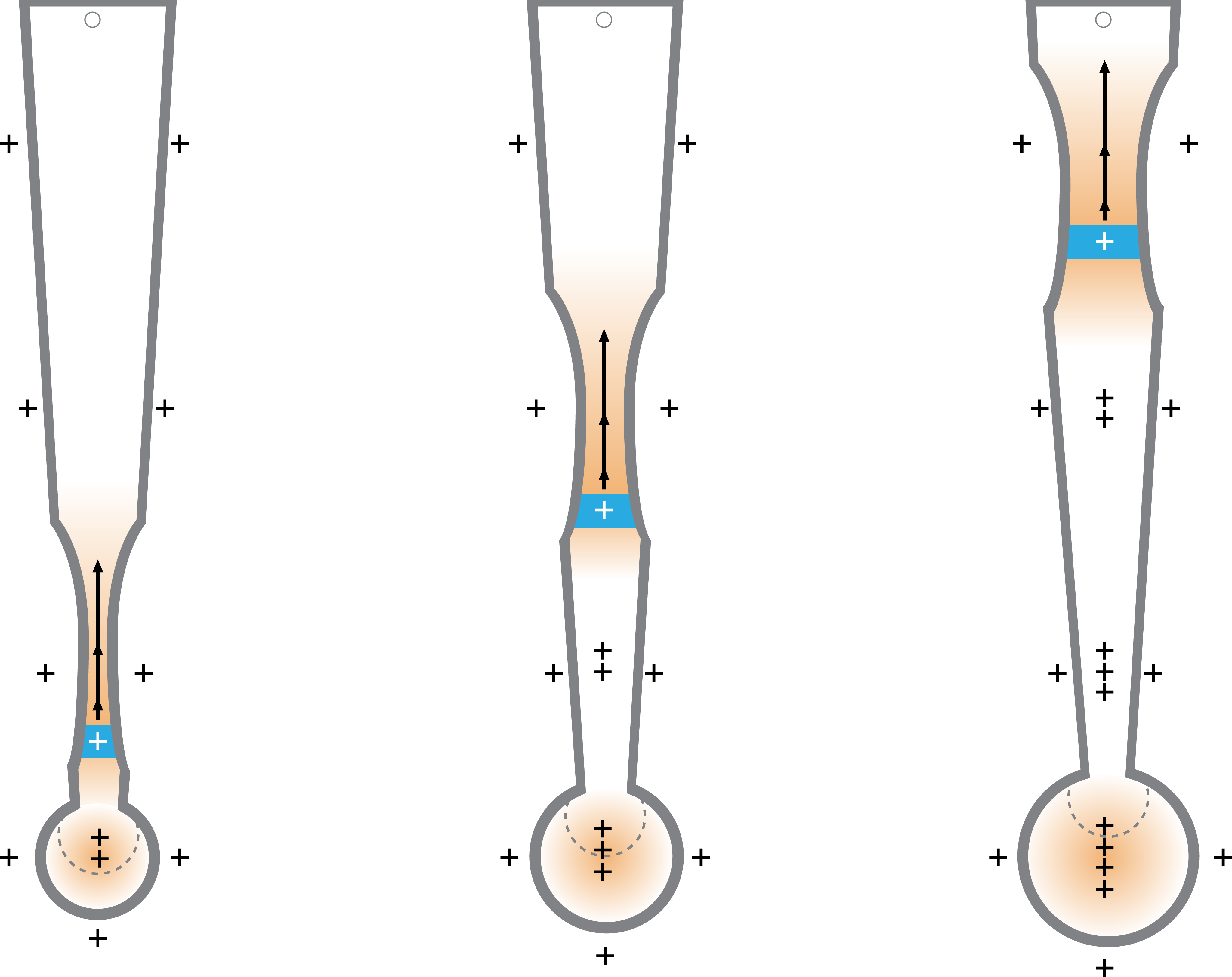Huffing – The Forced Expiration Technique (FET) – FET Video
(To download a patient information sheet go to FET)
A huff (also called the forced expiration technique [FET] when combined with breathing control) is a manoeuvre used to move secretions, mobilised by thoracic expansion exercises, downstream towards the mouth.
It can be used as a stand-alone technique but should always be included in any airway clearance routine.
If taught appropriately, the FET is probably the most effective airways clearance technique (van der Schans 1997). It should be taught by a health care professional with experience in teaching this technique.
Before commencing to teach the technique, it is beneficial to explain the physiology in simple terms with diagrams. This helps the patient to understand the need for monitoring the length of the breath out and the expiratory force (Fig. 5).
The technique is generally taught in sitting.
Before huffing the patient breathes quietly, at their own pace, for as long as is required.
When initially taught, the patient is instructed to take a medium breath in and to breathe out with mild to moderate force and extended expiratory flow, with the glottis open. The length of the huff and force of contraction of the muscles of expiration should be altered to optimise clearance of secretions (Pryor & Prasad 2008) by maximising air flow.
For patients with the cognitive ability, three levels of huffing can be taught. The patient is instructed to huff with first small, then medium and finally, large volume inspiratory breaths, to assist in moving secretions from the peripheral airways, through the medium airways, towards the mouth. With all of these inspiratory volumes, the expiratory force and length of expiration are similar (see the physiology section below).
To facilitate the opening of the glottis, the patient can be taught to perform a huff with a piece of cardboard spirometry tubing (or any tubing of a similar diameter) placed at least four centimetres inside their open mouth (Fig.3). If glottis closure persists, a tissue can be placed in front of the mouth for feedback. With the glottis open the tissue will float away. With the glottis closed it will remain still (FET video).

Physiology – The rationale behind a huff is based on the equal pressure point (EPP) – the point at which pressure within the bronchi equals peri-bronchial pressure (outside the airway). (Fig. 4).
Fig. 4 Equal Pressure Point
During normal respiration, the EPP occurs in airways protected by cartilaginous rings which help to prevent airway collapse. During a forced expiration, the pressure outside the airway remains relatively constant, whilst the pressure inside the airway decreases from the peripheral airways to the mouth, resulting in airway compression. With a forced expiration, a wave of EPP’s move peripherally into smaller airways as the lung volume decreases and the pressure within the airway falls. This, together with the turbulent airflow created, facilitates the movement of secretions downstream towards the mouth. The position of the EPP is dependent on lung volume and the pressure outside the airway(Fig 5)
Fig. 5 Movement of the Equal Pressure Point
Key: Blue segment = equal pressure point, Plus signs = pressure within and outside the lung, Black arrows = airflow
The EPP moves upstream towards the alveoli when the volume inside the lungs decreases and/or the pressure outside the airway increases. The EPP moves downstream towards the mouth when the volume inside the lungs increases and/or the pressure outside the airway decreases. Therefore, to move secretions from peripheral airways, it is more effective to commence huffing at low lung volumes and to progress to medium and finally large lung volumes.
Evidence
The FET is a valuable technique (van der Schans 1997) which is effective at clearing sputum from the larger airways. FET is an integral component of other airway clearance techniques e.g. the active cycle of breathing technique (ACBT), and it may be more appropriate than the use of directed coughing in patients with unstable airways.
Huffing has been found to be more effective in the upright position (Badr et al 2002). The limited available evidence does not seem to support using the FET as a solitary treatment.
Clinical experience shows that it is one technique which patients often fail to do as effectively as they could.
Evidence
The FET is a valuable technique (van der Schans 1997) which is effective at clearing sputum from the larger airways. FET is an integral component of other airway clearance techniques e.g. the active cycle of breathing technique (ACBT), and it may be more appropriate than the use of directed coughing in patients with unstable airways.
Huffing has been found to be more effective in the upright position (Badr et al 2002). The limited available evidence does not seem to support using the FET as a solitary treatment.
Clinical experience shows that it is one technique which patients often fail to do as effectively as they could.










